You’ve come up with an incredible software idea, maybe it’s an innovative mobile app, a powerful tool for businesses, or a tech solution that could redefine the way people work, connect, or live. It’s exciting, inspiring… and full of potential. But as any successful entrepreneur or product builder will tell you, having a great idea is just the first step.
So, what’s next?
How do you turn that spark of inspiration into a fully developed software product that users not only love but also use? And how do you make sure it supports your business goals, generates real value, and stands out in a competitive market?
In this post, we’ll walk you through the essential steps to bring your software vision to life, from refining your idea to launching a product that impacts you.
Creating great software takes more than just jumping into code. It’s a thoughtful, step-by-step journey that starts with smart planning and ends with a product people love to use. From the first idea to launch day, each phase, like research, design, development, and testing, is key to building something that works and delivers real value.
In this guide, we’ll walk you through the essential stages of software development. By the end, you’ll understand how to turn your software idea into a fully functional, high-quality product.
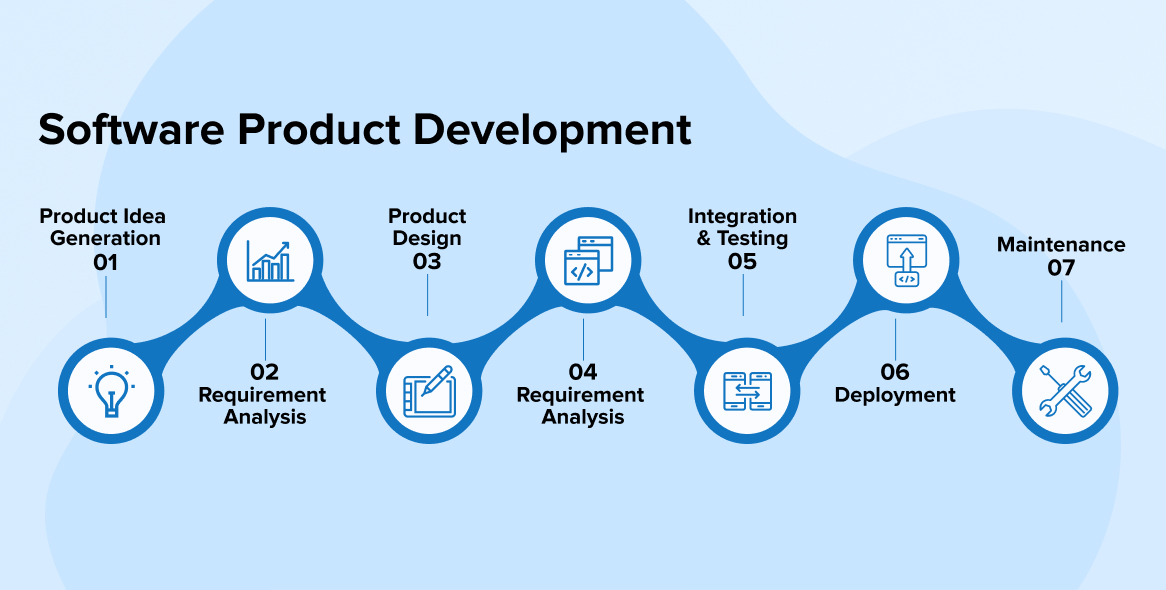
What is a Software Development process?
Creating software isn’t just about writing code. It’s a step-by-step journey that turns great ideas into powerful, working applications. This structured process helps development teams design, build, test, and launch software that truly delivers.
Think of it like a roadmap for your project. From the first brainstorming session to the final deployment (and beyond), a clear software development process keeps everything on track. It helps avoid common pitfalls like missed deadlines, budget surprises, and products that fall short of expectations.
By following a proven process, your team can stay organized, work efficiently, and build software that meets user needs and business goals.
“Software development is more than just writing code … it’s about creating smart, scalable solutions that solve real-world problems in a user-friendly way.”
The core of the software development process is all about bringing your vision to life, building a solution that solves real-world problems and delivers real value. It’s not just about writing code; it’s about making sure the final product meets both technical requirements and user expectations, all while supporting your business goals.
Popular development methodologies like Agile, Waterfall, Scrum, and Kanban help guide teams through this journey. While each approach is different, they all share the same mission: to transform a great idea into a functional, user-friendly, and impactful software product.
8 Core Steps of the Software Development Process
Now that you understand the basics of the software development process, let’s explore the 8 key steps that bring a software idea to life. Each stage plays a vital role in turning your vision into a fully working product. While these steps are usually followed in order, the process isn’t always linear, some phases can happen simultaneously, depending on the project’s flow and needs.
1. Discovery & Requirement Analysis
Every successful software project begins with a solid foundation. In the discovery and requirement analysis phase, we take the time to fully understand your needs, challenges, and goals. This is where we define the purpose of the software, identify your target users, and align with your business objectives. Think of it as laying the groundwork for a smooth development journey, turning ideas into a clear, strategic plan.

In this stage, you’ll connect with key stakeholders including clients, business owners, and end users, to gather valuable insights and feedback. These insights help shape a clear and comprehensive Product Requirements Document (PRD) that outlines all the must-have features for your software. The PRD acts as a roadmap for your development team, making sure everyone is aligned and ready to build with confidence.
When you’re starting a new software development project, one of the most valuable things you can do is host a Kick-off Workshop. It’s more than just a meeting,it’s a powerful way to align your team, clarify goals, and build a strong foundation for what’s ahead.
What Is a Kick-off Workshop?
A Kick-off Workshop is a collaborative session that brings together project stakeholders, developers, designers, and product owners to get everyone on the same page before development begins. During this workshop, you’ll:
- Define the project’s scope
- Identify key stakeholders
- Establish a shared vision
- Set clear expectations and roles
It’s a chance to surface potential risks early, align on priorities, and ensure that every team member understands the goals and direction of the project.
Why It Matters in Software Development
In the world of software development, building the right product isn’t just about clean code or fancy features. It’s about solving real problems for real users. One of the biggest challenges? Making sure your product actually meets user needs and delivers value.
Without the right research and planning, there’s a risk that your product won’t resonate with your audience or worse, miss the mark entirely.
From Guesswork to Clarity
That’s where a Kick-off Workshop makes a difference. It shifts your team from guesswork to clarity. By aligning early and often, you set your product up for long-term success,both in terms of usability and market fit.
To stay ahead in the market, it’s a smart move to invest in professional product research services. These experts can help you uncover valuable insights into market trends, competitor strategies, and customer preferences,giving you the knowledge you need to make confident, informed decisions. With the right research, your product is more likely to solve real problems and succeed in the market.
2.Plan Your Project for Success
After collecting all the key insights during the discovery phase, the next step is project planning. This is where you map out the entire software development journey. During this stage, you’ll set clear goals, create a realistic timeline, define important milestones, and determine the tools and resources needed to successfully build your software. A solid project plan keeps your team aligned and ensures a smooth development process from start to finish.
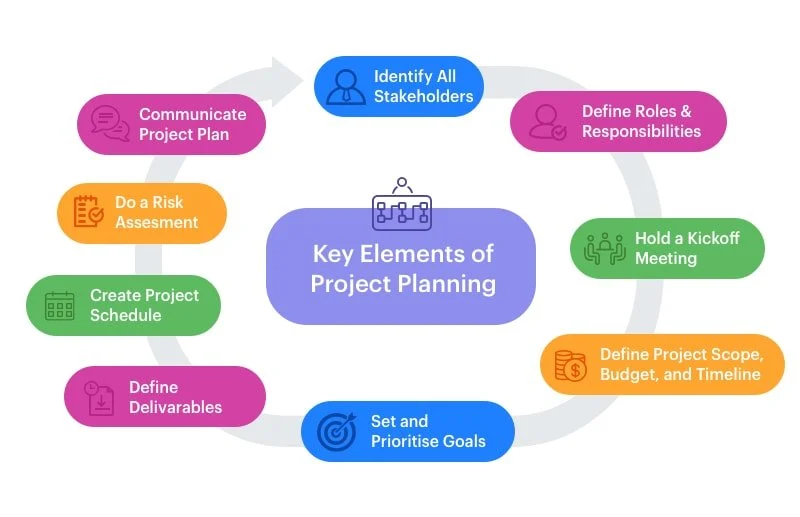
Successful project planning starts with a clear understanding of your goals and setting achievable deadlines. A well-organized project plan should outline a detailed timeline for when each feature will be developed, tested, and launched. It’s also important to clearly define team roles and responsibilities so everyone knows what they’re in charge of. The more thoughtful and realistic your planning is from the start, the smoother your project will run, helping you avoid roadblocks and stay on track.
Planning your project means more than just setting goals, it also includes estimating the costs involved. Think about how much development time you’ll need, the price of tools and technology, and whether you’ll need to outsource any tasks. Creating a clear and realistic budget helps keep your project on track, avoid surprises, and reduce delays. With the right financial plan in place, your project is set up for success from day one.
3.Software architecture.
This step is all about planning how your software will be structured so it’s reliable, scalable, secure, and easy to maintain over time. A solid architecture sets the foundation for smooth development and long-term success.
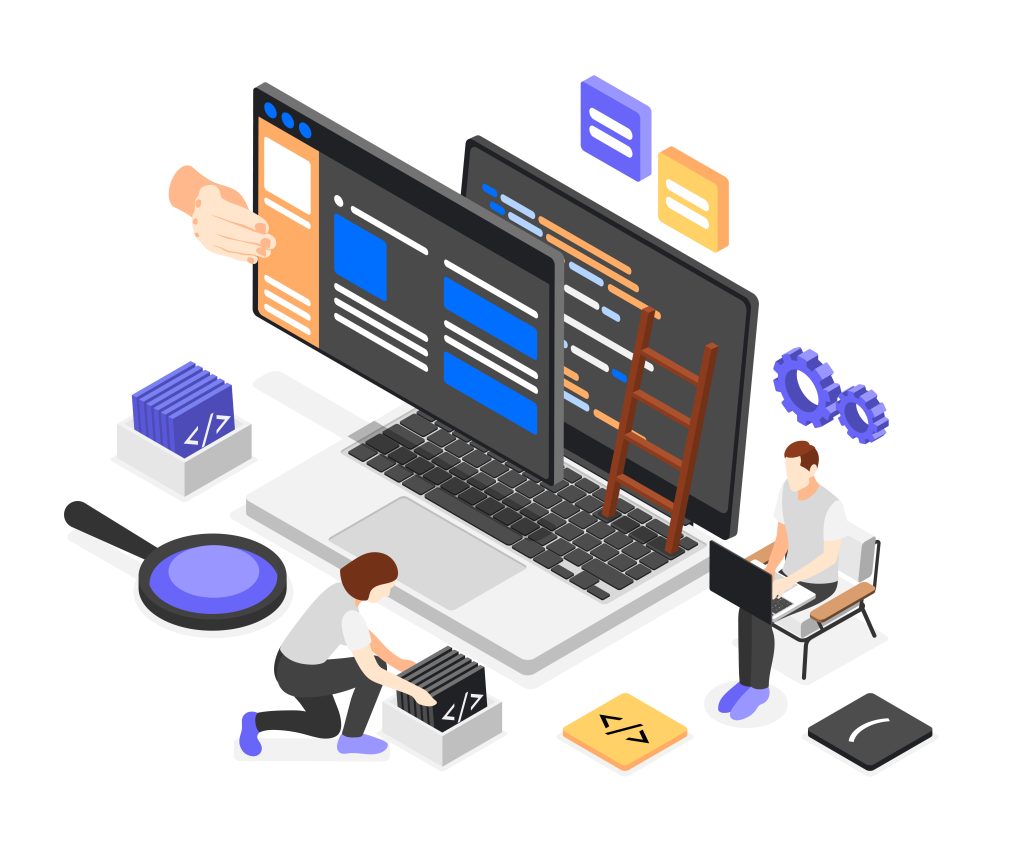
Software architecture is all about planning how your system will work behind the scenes, from choosing the right technologies to designing how different parts of your software communicate and handle data. Making smart decisions at this stage plays a big role in your app’s performance, security, and ability to grow. That’s why it’s essential to collaborate with skilled software architects and developers who can guide you through the process.
When starting a new software project, one of the first big decisions you’ll face is choosing the right technology stack,for both the front-end and back-end. Should you build a web app or a mobile app? Which frameworks make the most sense for your goals? What programming languages best fit your project’s needs? These choices will have a major impact on how your software performs and scales over time.
But if you’re not experienced in software architecture, these decisions can feel overwhelming. That’s where software architecture consulting comes in.
Working with expert consultants helps you make confident, informed choices. They bring deep knowledge of scalable and secure system design, guide you through selecting the best cloud solutions, and help with data management strategies. With their support, you can avoid costly missteps and set your software up for long-term success and growth.
4. UI/UX design
Now that the software architecture is in place, it’s time to bring your product to life through thoughtful UI/UX design. This is the stage where your app or platform starts to look and feel real, transforming complex functionality into an enjoyable, user-friendly experience.
User Interface (UI) design focuses on the visual elements,things like typography, color palettes, buttons, and layout. It’s all about creating an attractive and consistent look that reflects your brand.
User Experience (UX) design, on the other hand, ensures that users can navigate your software easily. It’s about making sure every interaction is smooth, intuitive, and satisfying.
By blending strong UI with smart UX, you create a digital product that not only works well but feels great to use.
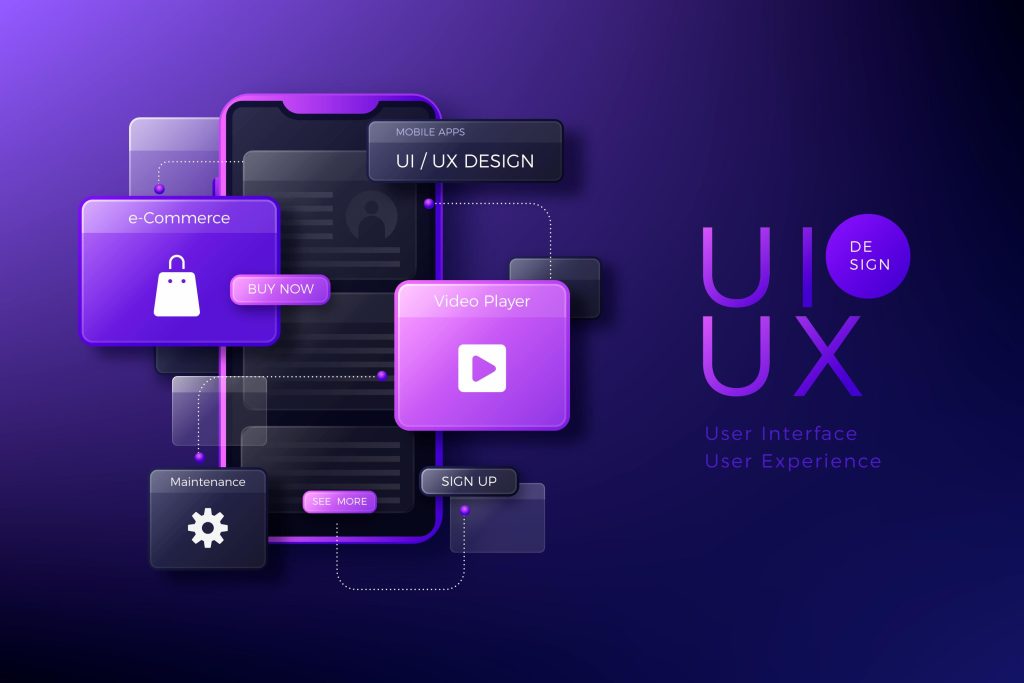
User interface (UI) and user experience (UX) design play a crucial role in the success of any software product. A stunning app that’s hard to navigate can frustrate users, while a functional tool with a clunky design may struggle to keep people engaged. That’s why good design is about more than just looks—it’s about creating a smooth, intuitive experience.
In this stage of development, UI/UX designers start by building wireframes to lay out the structure and flow of the software. Then, they create mockups to fine-tune the visual style, and finally, they develop interactive prototypes that let users explore and test how everything works in real time.
5. Software development
This is where the magic truly happens. During the software development phase, your development team brings your vision to life,turning detailed blueprints and beautifully crafted UI/UX designs into working, feature-rich software.
This phase is usually the most time-intensive, as it involves carefully writing, testing, and integrating all the core features your application needs.
Here’s how it typically breaks down:
- Front-End Development: This is the part users see and interact with. Developers create the interface and user experience, making sure your app looks great and feels intuitive on every device.
- Back-End Development: Behind the scenes, this part handles all the heavy lifting. It includes building the server infrastructure, setting up databases, and coding the logic that powers your app’s functionality.

Many teams face challenges when it comes to managing complex software development projects while also meeting user expectations. That’s where professional software development services come in. With expert guidance at every step, these services help ensure your product is scalable, high-performing, and delivers a seamless user experience.
To stay organized and efficient, teams often adopt structured development methodologies, like Agile. Agile breaks the project into smaller, manageable tasks called sprints. This approach encourages continuous feedback and quick iterations, making it easier to catch and fix issues early on.
A popular strategy during the early stages is building a Minimum Viable Product (MVP). An MVP includes only the essential features needed to test your product’s core idea and gather feedback from real users. Choosing which features to include can be tricky, but MVP development services can help your team focus on what matters most, reducing risks and keeping costs under control.
For full support from start to finish, product development services provide end-to-end solutions, from initial planning and design to launch and beyond. These services ensure your software aligns with your business goals and delivers real value to your users.
6. Performance testing & bug fixing
No matter how well your software is designed, it’s not truly ready for release until it’s been thoroughly tested. Software testing is a crucial step that helps catch bugs, improve performance, and ensure a smooth user experience. During this phase, your development team will run several types of tests to make sure everything works as expected:
- Unit Testing : Checks that each part of the code (or unit) functions correctly on its own.
- System Testing: Verifies that all components of the software work together seamlessly.
- Performance Testing: Evaluates how your software performs under load and high traffic.
- Security Testing: Identifies and fixes potential vulnerabilities to keep user data safe.
By prioritizing software testing, you boost reliability, enhance user satisfaction, and build trust with your audience.
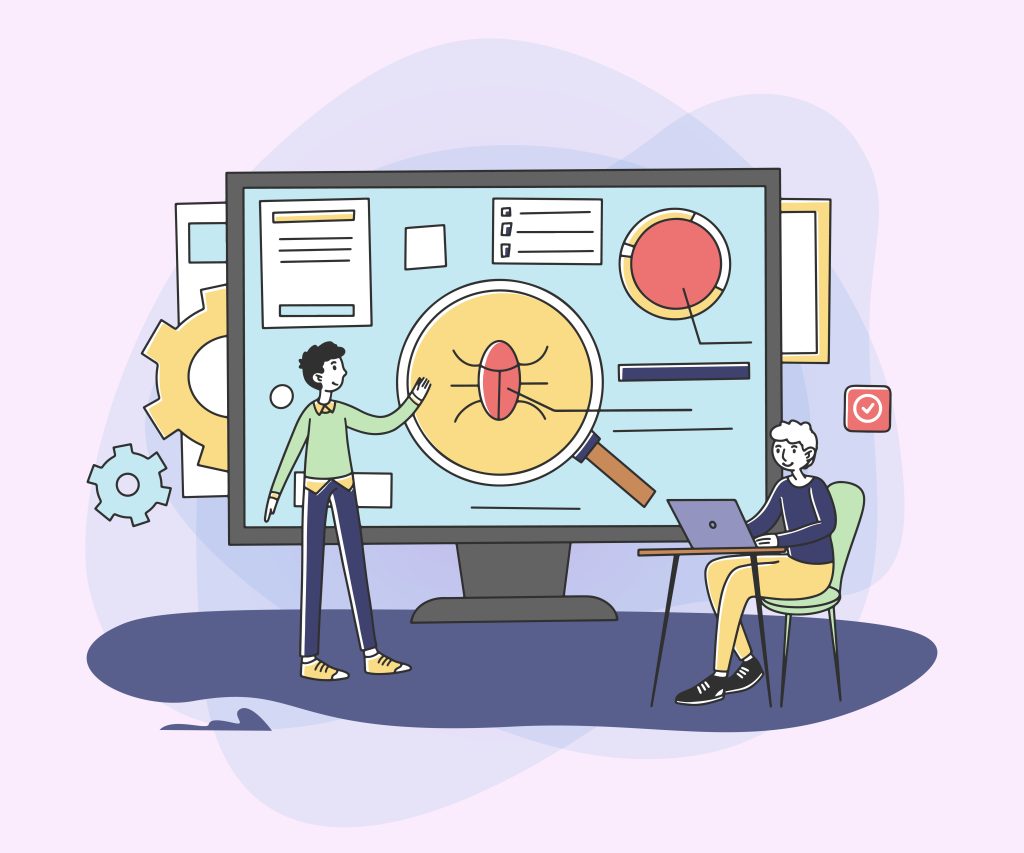
Discovering issues during this stage is completely normal, which is why bug fixing plays such a key role in the process. Our development and testing teams collaborate closely to tackle any problems, making sure the final product is reliable, high-performing, and ready for users.
7.Setting Up the Software Environment & Launching the Official Release
Deployment is a crucial part of bringing your project to life. It’s the moment when your software goes live and becomes available to users. This stage involves moving the application from the development or testing environment into the production environment where it’s fully accessible.
A smooth deployment process requires thoughtful planning. Depending on how complex your software is, you might choose a gradual rollout method like blue/green deployment or canary deployment. These strategies let you launch in stages, making it easier to catch and fix any issues before the full release, helping ensure a stable and successful launch.
Once your software goes live, the official launch is complete and users can start enjoying its features. But that’s just the beginning! To ensure everything continues to run smoothly, regular updates, improvements, and bug fixes will be essential.
8. Performance monitoring & updates.
Once your software is live, the journey doesn’t end,it evolves! The final phase of the software development lifecycle is all about performance monitoring and continuous improvement. It’s important to regularly track how your application is performing, respond to any issues quickly, collect user feedback, and release timely updates.
Common challenges at this stage include dealing with bugs, performance slowdowns, and unexpected crashes. These can negatively impact user experience and your brand reputation. That’s where application support and maintenance services come in. With proactive monitoring, real-time issue resolution, and ongoing optimization, these services help keep your software reliable, efficient, and ready to scale.
Monitoring tools play a key role in keeping your software running smoothly. They help you track system performance in real time, quickly spotting any slowdowns or issues before they impact users. With these insights, your team can fine-tune the software to improve speed, reliability, and overall user experience.
User feedback is just as important. By actively listening to what your users are saying, you can identify which features to prioritize, fix bugs faster, and make smart updates that align with user needs. In today’s fast-paced tech landscape, regular updates based on data and feedback are essential to stay competitive and keep users happy.
Best Software Development Methods
When you’re building software, the development methodology you choose can make a big difference in how smoothly your project runs. It can affect everything, from team collaboration and timelines to testing, deployment, and overall success.
Each software development approach brings its own strengths to the table. The best fit depends on your project goals, team setup, and deadlines.
In this guide, we’ll break down the most popular software development methodologies and show you how each one can turn your idea into a fully functional product.
Agile
Agile is one of the most popular and effective software development methodologies used today and it’s easy to see why. Agile focuses on flexibility, teamwork, and ongoing customer feedback, helping development teams adapt quickly to changes without losing momentum.
Instead of following a strict, step-by-step timeline, Agile breaks projects into smaller, manageable chunks called “sprints”, which typically last two to four weeks. During each sprint, the team works on building a usable piece of the software.
After each sprint, the team reviews their progress and gathers feedback from clients or stakeholders. This iterative approach allows for continuous improvement and fast adjustments, making Agile especially valuable for projects where requirements might change frequently.

Advantages:
- Continuous feedback means you can quickly adapt and improve with every iteration.
- It promotes close collaboration between developers and stakeholders, keeping everyone aligned.
- Agile is built for flexibility, making it perfect for fast-paced, ever-changing projects.
But let’s be honest adopting Agile isn’t always easy. Many teams face roadblocks like unclear sprint goals, communication breakdowns, or low stakeholder involvement. These issues can slow progress or derail projects entirely.
That’s where resources like Agile Software Development come in. This comprehensive guide breaks down Agile principles, key benefits, and proven best practices, giving you the tools you need to overcome challenges and implement Agile successfully.
Waterfall
Unlike the flexible and adaptive nature of Agile, the Waterfall methodology follows a more structured and linear process. In this traditional project management model, each phase must be fully completed before moving on to the next, making it best suited for projects with well-defined goals and stable requirements.
The Waterfall approach typically includes several key stages: requirements gathering, system design, implementation, testing, and deployment. Because each step builds on the previous one, this method offers a straightforward, step-by-step framework that’s easy to follow and manage,especially when the project scope is clearly outlined from the beginning.
Waterfall is a great fit for teams working on predictable projects where changes are minimal and clarity is key. Its organized structure makes it easier to plan, monitor progress, and deliver results on time.

Advantages:
- Simple, step-by-step structure makes it easy to follow and manage from start to finish.
- Perfect for projects with well-defined goals and minimal expected changes.
- Clear outcomes at each phase help track progress and keep the project on schedule.
However, while the Waterfall model is a great choice for predictable projects, its structured approach can be less flexible for projects that involve frequent updates or high levels of uncertainty.
Scrum
Scrum is a popular framework within the Agile methodology, and it stands out thanks to its clear structure and focus on team roles and accountability. While it shares Agile’s core values, like flexibility and iterative progress, Scrum brings its own set of practices to the table.
In Scrum, work is organized into short, focused cycles called sprints. These sprints help teams deliver small, workable pieces of a project quickly and consistently. Two key roles drive the Scrum process: the Scrum Master, who guides the team in following Scrum principles, and the Product Owner, who represents the stakeholders and keeps the task backlog organized and prioritized.
One of Scrum’s most well-known practices is the daily stand-up, a quick team meeting where members share what they’ve done, what they plan to do, and any challenges they’re facing. These daily check-ins help the team stay aligned, spot potential roadblocks early, and keep the project moving smoothly.
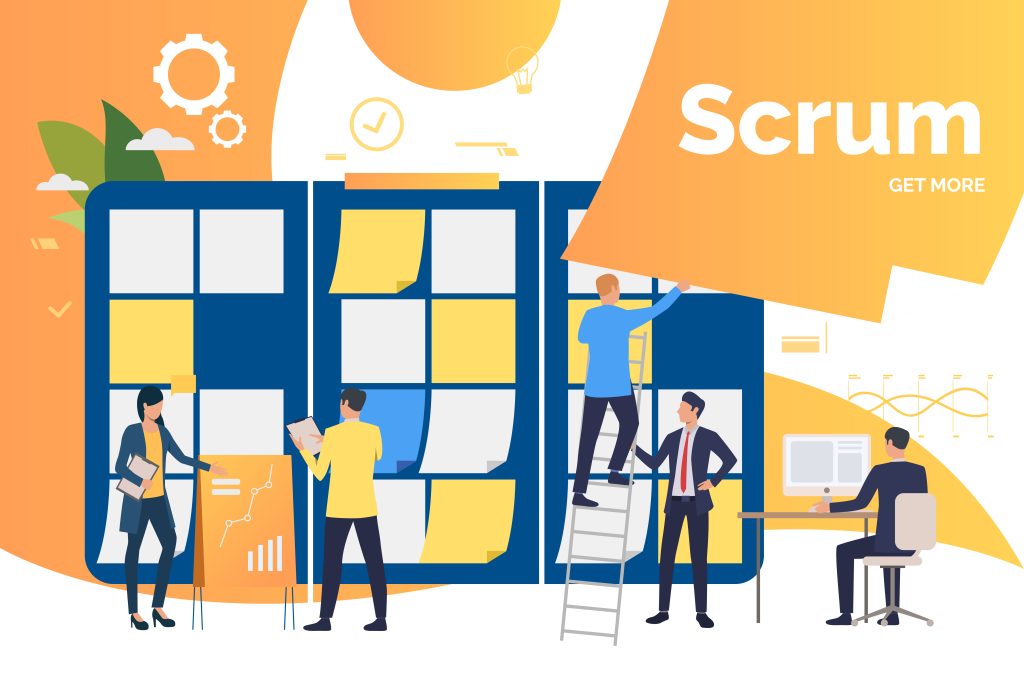
Advantages:
- Clear Roles for Better Accountability: Everyone knows their responsibilities, which boosts transparency and ownership.
- Daily Stand-Up Meetings for Smooth Communication: Quick check-ins keep the whole team aligned and help solve problems fast.
- Frequent Delivery of Working Software: At the end of each sprint, you’ll have tangible, functional results to show.
- A Flexible, People-Focused Approach: Scrum shines when you value open communication, teamwork, and adaptability.
Want to dive deeper into how Scrum works? Check out the official guide at Scrum.org.
Kanban
Kanban is an Agile methodology with its own unique style. Instead of working in fixed time-boxed sprints like Scrum, Kanban focuses on continuous flow, keeping work moving smoothly from start to finish.
At the heart of Kanban is the Kanban board , a visual tool that helps you track every task at a glance. The board is divided into columns that represent each stage of the process, such as “To Do,” “In Progress,” and “Done.” As tasks move across the board, you can instantly see what’s being worked on, what’s finished, and where things might be getting stuck.
What makes Kanban so popular is its simplicity and flexibility. There are no strict deadlines or sprint cycles. Instead, it’s perfect for projects with unpredictable workloads, ongoing maintenance, or frequent updates. By limiting work in progress (WIP) and focusing on a steady flow, Kanban helps teams work smarter, avoid bottlenecks, and deliver consistent results.
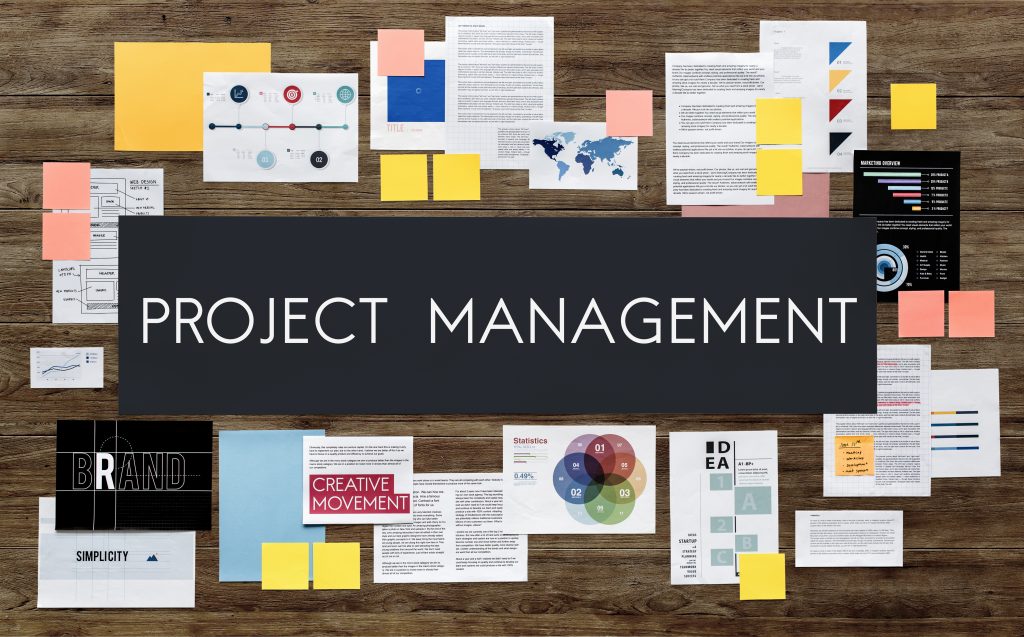
Advantages:
- Simple and visually clear: Kanban boards are easy to set up and make project progress instantly visible to everyone.
- Prevents workflow bottlenecks: By managing work in progress, teams can keep tasks moving smoothly without delays.
- Perfect for ongoing projects: Ideal for continuous delivery where strict deadlines aren’t a priority.
- Flexible and adaptable: Loved by support and maintenance teams, Kanban easily adapts to projects that evolve and change over time.
DevOps
DevOps isn’t just a methodology, it’s a culture that transforms how software is built, tested, and delivered. By uniting the strengths of development (Dev) and operations (Ops) teams, DevOps streamlines workflows, boosts collaboration, and speeds up delivery without compromising quality.
At its heart, DevOps aims to break down the old silos between teams, replacing them with a shared mindset and seamless communication. One of its standout practices is Continuous Integration (CI) and Continuous Deployment (CD). These automated pipelines test and release code in real time, ensuring faster updates, fewer errors, and more reliable software.
Through automation, DevOps shortens the journey from idea to production while keeping software stable, secure, and ready for users. In today’s fast-moving digital world, adopting DevOps is key to staying competitive, innovative, and customer-focused.
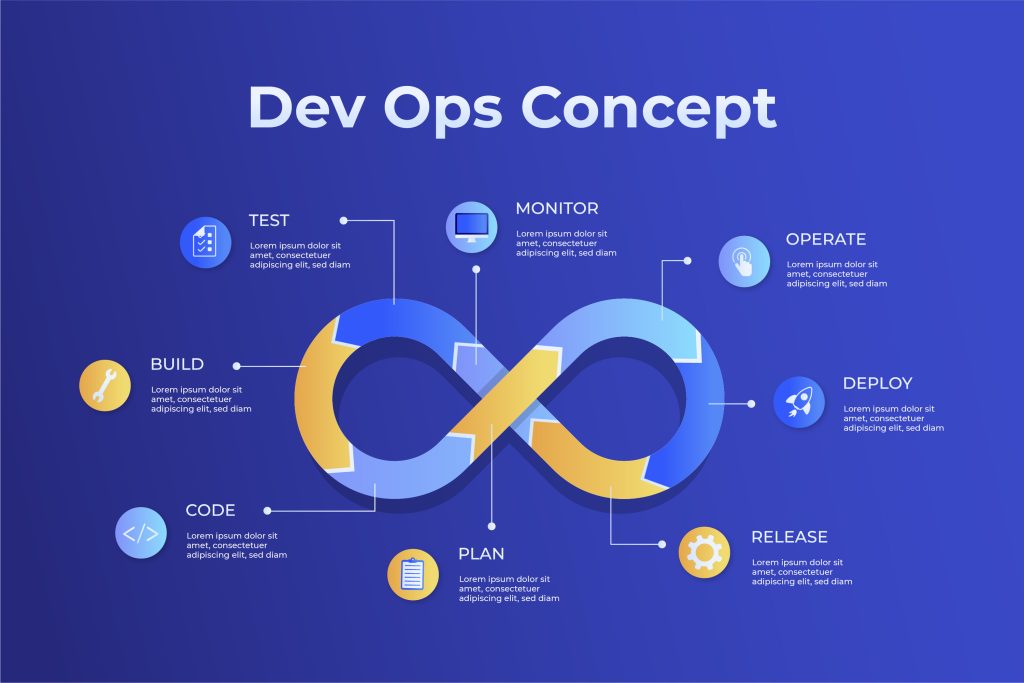
Advantages:
- Faster Development Cycles: By integrating testing and deployment early in the process, DevOps helps you release updates and new features more quickly.
- Better Team Collaboration: DevOps fosters open communication and teamwork between development, operations, and other departments, keeping everyone aligned.
- Smarter Automation: Automated processes minimize human errors and boost overall productivity.
Want to explore DevOps in depth? The DevOps is a fantastic resource. It covers everything from core principles to popular tools, giving you a complete picture of why DevOps is essential in modern software development.
Best Practices for Building a High-Value Software Project
After walking through the key steps and popular methodologies in software development, let’s dive into some proven best practices that can take your project from good to outstanding. These aren’t just nice-to-have tips, they’re crucial strategies for boosting efficiency, ensuring quality, and delivering maximum value to your users.
Start with Clear and Detailed Requirements
Every successful software project begins with a crystal-clear understanding of its goals and scope. Before writing a single line of code, invest time in the discovery phase and requirement analysis. This is where you define exactly what the software should do and why it matters.
A well-prepared Product Requirements Document (PRD) will act as your team’s roadmap, leaving no room for confusion. Whether you’re a developer, designer, or stakeholder, everyone should be aligned on the project vision, functionality, and success criteria right from the start.
A Product Requirements Document (PRD) should cover every part of your project, from functional requirements (what the software should do) to non-functional requirements (how well it should perform). When your requirements are crystal clear, you set a solid foundation for the entire project, helping prevent misunderstandings, missed targets, and costly mistakes later on.
A well-written PRD also acts as a communication bridge between everyone involved in the project. It lays out expectations, highlights possible risks, and defines deliverables upfront. This way, your team can tackle issues early, stay aligned, and avoid scope creep, last-minute surprises, or expensive rework. The result? A smoother workflow, faster progress, and goals everyone agrees on from the start.
Make User Experience (UX) Your Top Priority from Day One
When building software, it’s tempting to focus only on the tech and features. But here’s the truth,no matter how advanced your software is, its real success depends on how people feel when using it. A great UX isn’t just about good looks; it’s about creating an intuitive, efficient, and enjoyable experience that keeps users coming back. Put your users first, and you’ll set your software up for long-term success.
Use version control for collaboration
When multiple developers team up on the same project, version control isn’t just helpful, it’s essential. Tools like Git make it easy for everyone to work on different parts of the code simultaneously, without the risk of overwriting each other’s work. With version control, you can track every change, roll back to earlier versions when needed, and keep your entire team in sync with the latest updates. It’s the smart way to code together and keep your project running smoothly.
Embrace Continuous Testing for Better Software Quality
One of the biggest mistakes in software development is waiting until the very end to start testing. Instead, make testing a continuous process from day one. By testing early and often, you can spot and fix problems as they appear, avoiding a last-minute scramble to tackle a mountain of bugs.
Using automated testing tools speeds up the process, ensuring new features work smoothly without breaking existing functionality. This not only boosts product quality but also shortens release cycles by reducing the need for lengthy manual reviews.
Continuous testing also strengthens teamwork between developers and QA engineers, keeping everyone aligned and working toward the same goals. Early feedback loops help you avoid technical debt, deliver updates faster, and create a more reliable product.
The result? Higher-quality software, happier teams, and smoother projects that stay on track from start to finish.
Plan for scalability and maintenance
When creating your software’s architecture, think about scalability right from the start. As your audience grows and your project evolves, your software should be ready to handle more traffic, extra features, and higher performance demands without missing a beat. Planning for scalability early saves you headaches, and money , down the road.
Plan for Ongoing Maintenance
Launching your software is just the beginning. To keep it running smoothly and securely, you’ll need a solid maintenance plan that includes regular updates, bug fixes, and performance tuning. Consistent maintenance ensures your software stays competitive and continues to delight users.
Scalability Means Flexibility
Scaling isn’t only about handling more users, it’s also about adapting to new technology trends and rising user expectations. By building flexibility into your software design, you make it easier to roll out future upgrades, integrate with emerging tools, and add new features that keep your product ahead of the curve.
Maatix has the digital assets you need, but there’s more! Stay on our blog for up-to-date collections and expert design tips.

Leave a Reply